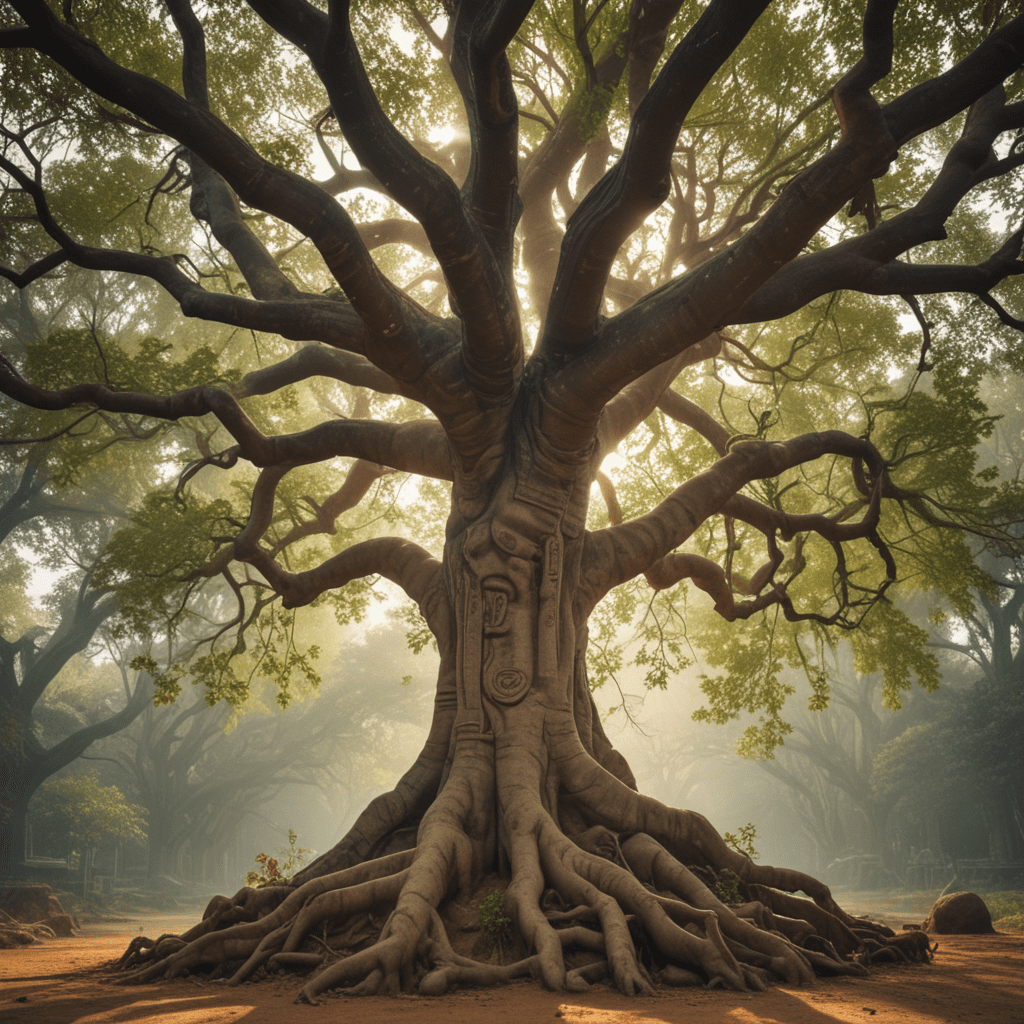The Mythical Trees in Hindu Mythology
Hindu mythology is replete with mystical trees, each imbued with unique powers and symbolism. Here are five of these enchanting trees that hold significant relevance in the Hindu pantheon:
Kalpavriksha: The Wish-Fulfilling Tree
Kalpavriksha, also known as the "heavenly tree," is the ultimate wish-fulfilling tree. It is believed to bear all desires, both material and spiritual. Those who sit under the tree and meditate are said to have their deepest wishes granted. In ancient texts, Kalpavriksha is often depicted as a celestial tree with a golden trunk and silver branches, adorned with precious gems and fruits that grant immortality.
Parijat: The Tree of Heaven
Parijat, known as the "tree of heaven," is a heavenly tree brought to earth by Lord Krishna. Its fragrant white flowers bloom at night, exuding a captivating aroma that is said to intoxicate and enchant even the gods. Parijat is believed to have originated in the celestial abode of Indra, where it is guarded by the celestial nymphs or Apsaras. Its flowers are highly prized, and it is said that offering them to Lord Shiva brings immense blessings.
Ashoka: The Tree of Sorrowlessness
Ashoka, known as the "tree of sorrowlessness," is a graceful and elegant tree associated with the goddess of love, Kamadeva. Its beautiful crimson-red flowers are said to alleviate sorrow and bring joy and happiness. Ashoka trees often adorned the gardens of palaces and temples, symbolizing love, fertility, and prosperity. According to legend, Ashoka trees sprang forth from the tears of the goddess Parvati when she mourned the loss of her beloved Lord Shiva.
Kadam: The Kadamba Tree
The Kadam tree, also known as the "tree of love," is a sacred tree associated with Lord Vishnu. It is believed that Lord Vishnu resided under this tree during his incarnation as Krishna. Kadam trees are characterized by their large, heart-shaped leaves, which symbolize love, affection, and compassion. Its flowers are white and fragrant, resembling a cluster of pearls, and are offered to Lord Vishnu during worship.
Banyan Tree: The Tree of Knowledge
The Banyan tree, known as the "tree of knowledge," is one of the largest and most sacred trees in Hindu mythology. It is associated with Lord Brahma, the creator of the universe. The vast canopy of the Banyan tree symbolizes knowledge, wisdom, and enlightenment. Its aerial roots, which descend from the branches and form new trunks, represent the interconnectedness of all life. The Banyan tree is often found near temples and is considered a sanctuary for meditation and spiritual contemplation.
Bael Tree: The Tree of Lord Shiva
The Bael tree, also known as the "tree of Lord Shiva," is a sacred tree associated with the god of destruction and transformation. Its leaves are trifoliate, representing the three aspects of Shiva: Brahma, Vishnu, and Mahesh. The fruit of the Bael tree is considered auspicious and is often offered to Lord Shiva during worship. Bael trees are found throughout India and are believed to have medicinal and spiritual properties.
Mango Tree: The Tree of Love
The Mango tree, known as the "tree of love," is associated with the goddess of love, Kamadeva. Its sweet and juicy fruit is a symbol of love, passion, and fertility. The leaves of the Mango tree are also used in traditional Indian medicine and religious ceremonies. Mango trees are often planted near homes and temples, bringing auspiciousness and blessing.
FAQs
Q: What is the most sacred tree in Hindu mythology?
A: The Banyan tree is considered the most sacred tree in Hindu mythology, symbolizing knowledge, wisdom, and enlightenment.
Q: Which tree is believed to fulfill wishes?
A: The Kalpavriksha, also known as the "wish-fulfilling tree," is believed to grant the wishes of those who sit under it and meditate.
Q: What tree is associated with Lord Shiva?
A: The Bael tree, also known as the "tree of Lord Shiva," is sacred to the god of destruction and transformation.
Q: Which tree is known as the "tree of heaven"?
A: The Parijat, known as the "tree of heaven," is a celestial tree brought to earth by Lord Krishna. Its fragrant white flowers are said to intoxicate and enchant even the gods.



